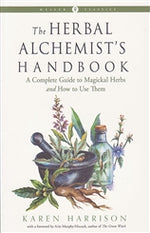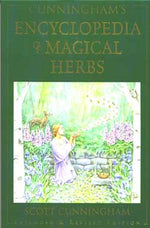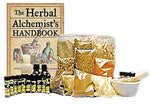Herbs of the Moon
Karen Charboneau HarrisonShare
© Copyright 2023 Karen Charboneau-Harrison, All Rights Reserved.
The energies of the Moon effect the activities of the subconscious, the intuition, dream work and the emotions. The plants attributed to the Moon act principally on the major fluids of the body and on the stomach (attributed to Cancer, ruled by the Moon). Their fluidic action is primarily regulatory and eliminative. Much of the digestive activity seems also to influence the individual's moods - the emotional effect of stomach action being well known so this dual action of several of the herbs makes a great deal of sense.
Several herbs bear marked resemblances to the Moon in her various phases, both in color and shape of plant, fruit and flower. The white fruits of fennel grow in pairs of curved oblong shapes that seem to represent the waxing and waning lunar crescents. The lily, long an associate of Lunar Goddesses, has round, bell-shaped flowers that are frequently bright white and it bears oblong to crescent shaped leaves. The fruit of the almond generally is also pure white and oblong to crescent shaped.
Those herbs that deal with fluidity generally act upon water and blood most specifically even as the Moon herself controls the tides and the flow of blood. Cucumber helps eliminate excess water from the body and is an anti-constipatory diuretic, particularly effective in dissolving uric acid accumulations such as kidney stones. Fennel and lily are eliminatives, laxatives and diuretics and while the lily acts as a digestive antispasmodic, fennel is commonly used to stimulate the flow of milk in nursing mothers. Mugwort (Artemisia vulgaris) is particularly apt in its lunar attribution in that in addition to its digestive and purgative qualities, a decoction can be used quite effectively to regulate the flow of menstrual blood.
Several Lunar herbs act on other fluids of the body (generally to eliminate excess) as well as acting as digestives. Camphor, by reducing fluid accumulation in the lungs and pleural sac, is an excellent remedy for whooping cough and pleurisy. Bitter almond is used as a cough remedy while sweet almond is used internally as a soothing syrup and externally as an emollient. Meanwhile, white sandalwood is used to reduce inflammation of mucosal tissue as well as being a diuretic - a decoction of the wood can also be used for indigestion.
Myrrh and Sandalwood share both astringent and stomachic properties, but along with jasmin and bitter almond, they share qualities ascribed to the Moon that surpass the simply medicinal. Bitter almond and jasmin both have sedative effects, calming the nerves and allowing a more intuitive, psychic lunar mode of brain function to manifest. It is probably also this aspect that has earned jasmin its reputation as an erotogen, the resultant intuitive empathy credited with aphrodisical properties and the ability to overcome inhibition. Almond, jasmine, sandalwood and myrrh seem when used in incense to also possess the ability to trigger olfactorily the subtle, lunar mode of perception that is so effective in work of intuition, psychism and pathworking.
Magickally speaking, herbs of the Moon affect the subconscious mind. They are a very good aid in the development of the intuition and of psychic abilities as well as in remembering dreams. As they have such a primary effect on the subconscious, they can be used to successfully influence it to break old habits and to recall past lives. Traditional Lunar herbs include anise, cabbage, camphor, cucumber, iris, jasmine, lettuce, lily, poppy, violet, willow, lotus, moonwort, mugwort, pumpkin and white sandalwood.
| Recommended Products | |
 Herbal Alchemists Handbook Herbal Alchemists Handbook |
 Cunninghams Encyclopedia of Magical Herrbs Cunninghams Encyclopedia of Magical Herrbs |
 Basic Herbal Sampler Basic Herbal Sampler |
 Basic Essential Oil Sampler Basic Essential Oil Sampler |
 Deluxe Essential Oil and Herbal Sampler Deluxe Essential Oil and Herbal Sampler |
|
